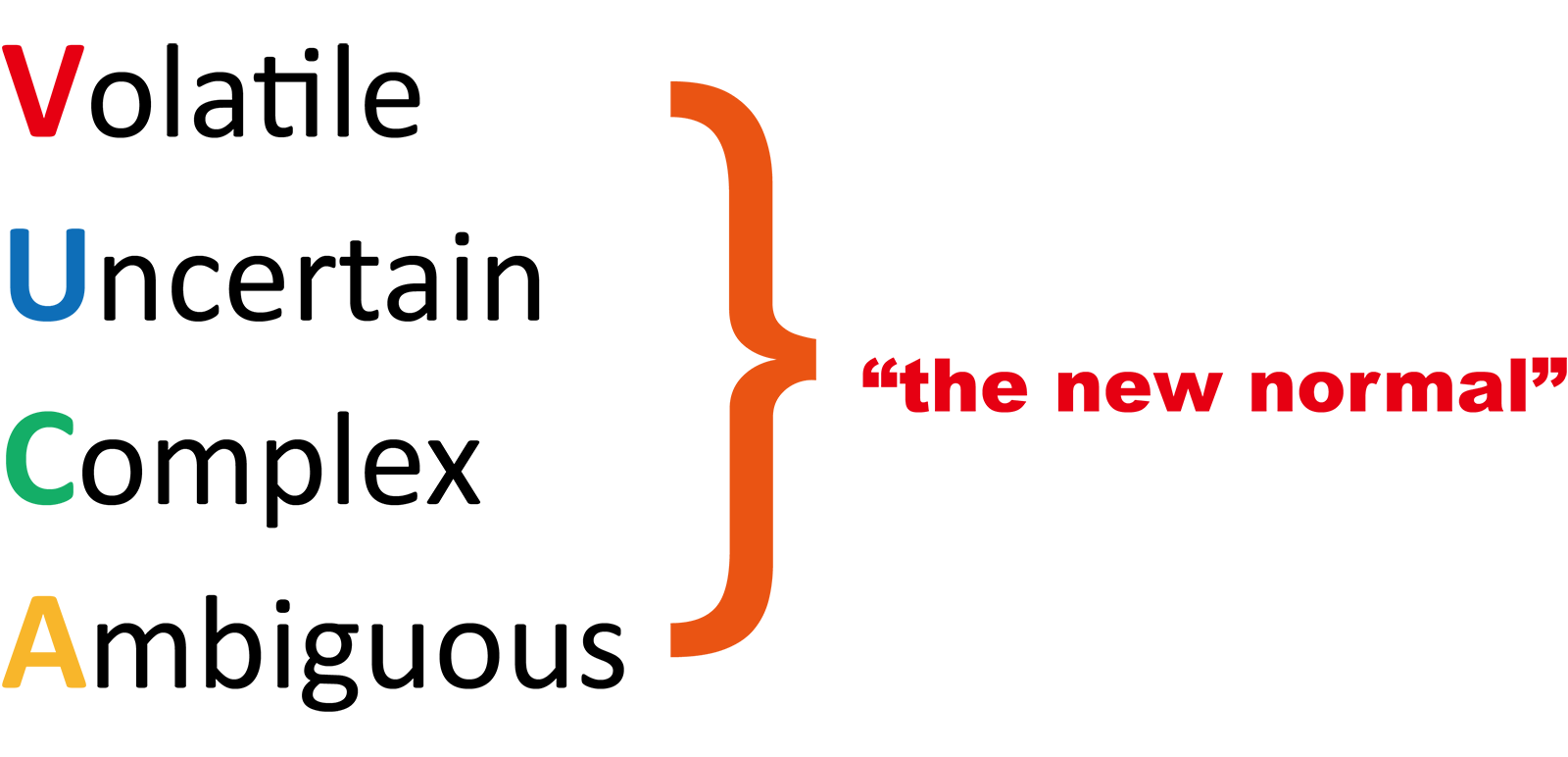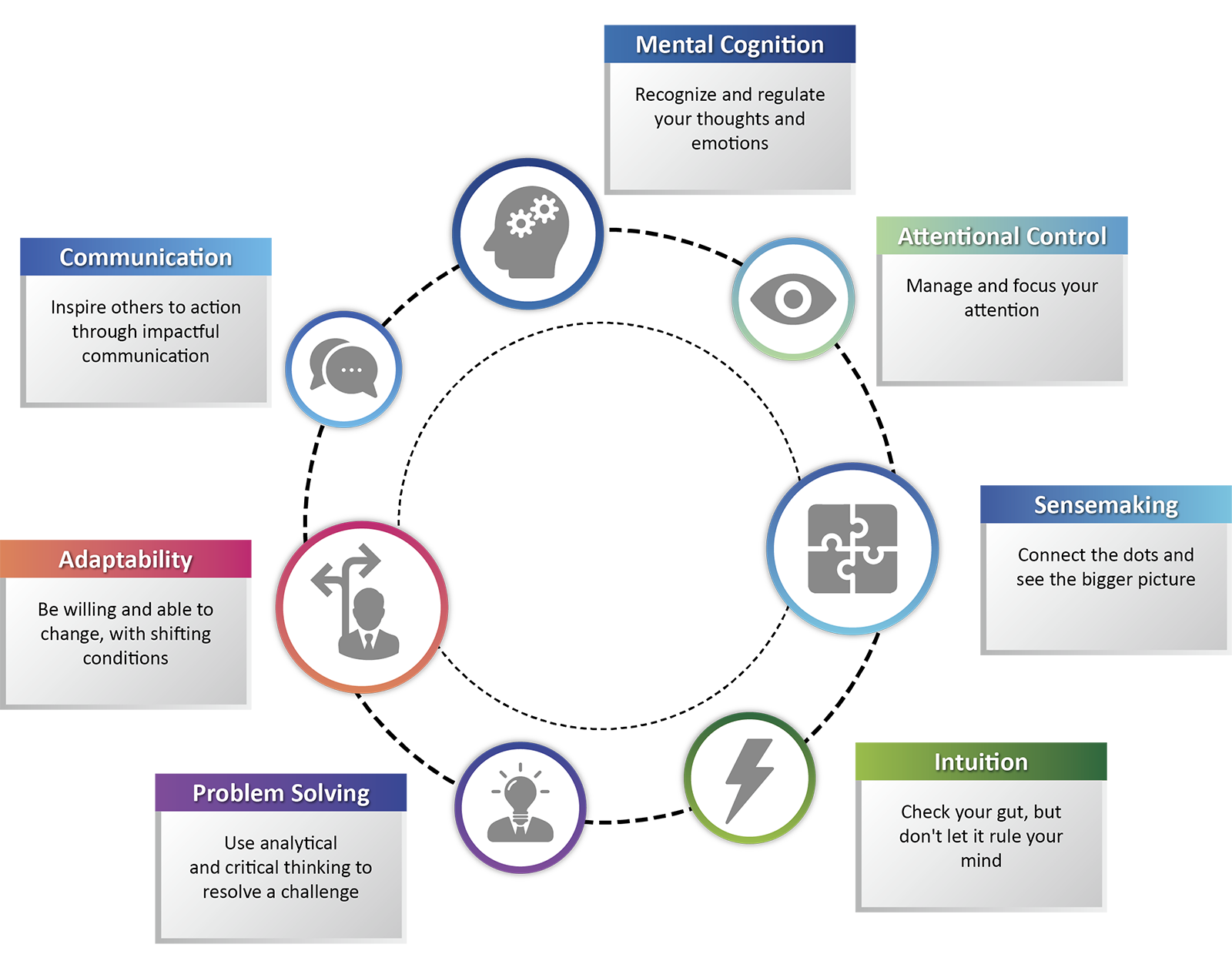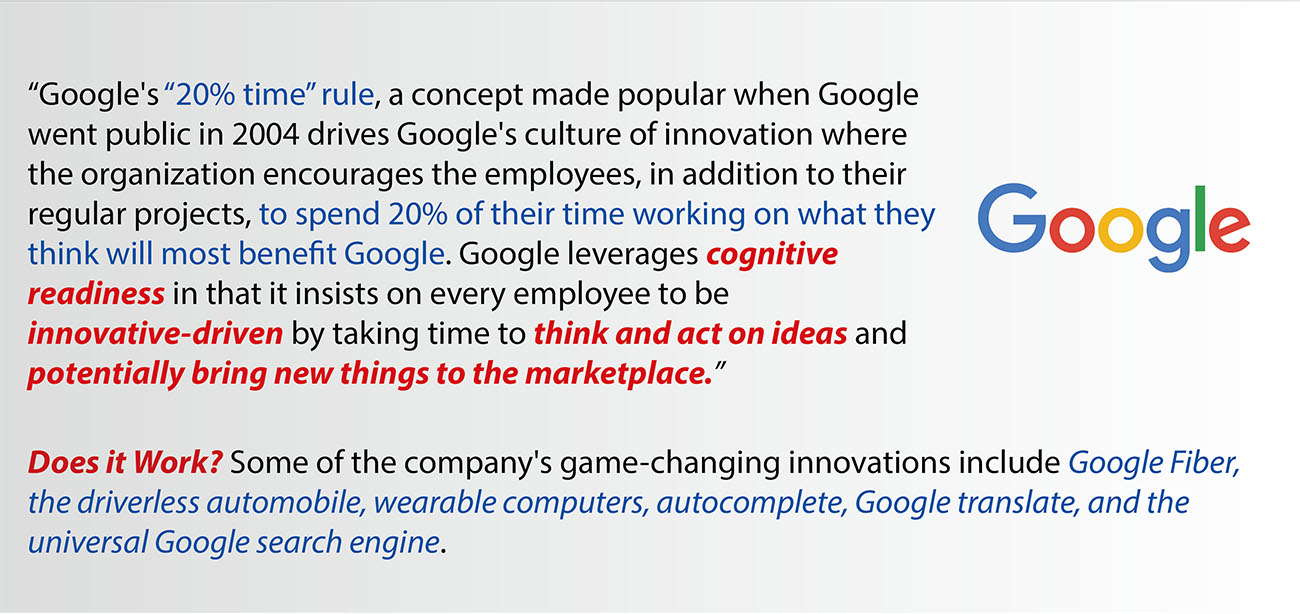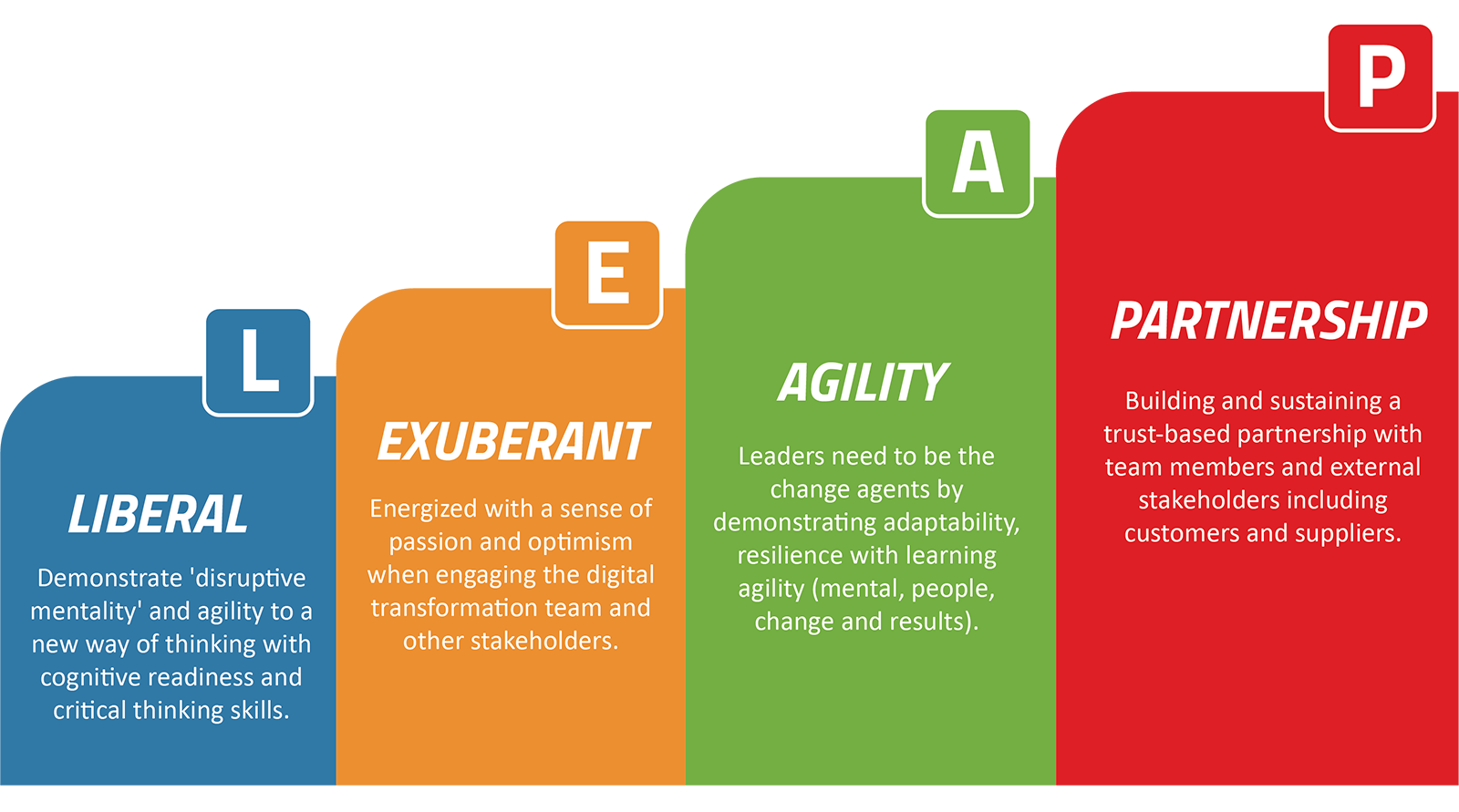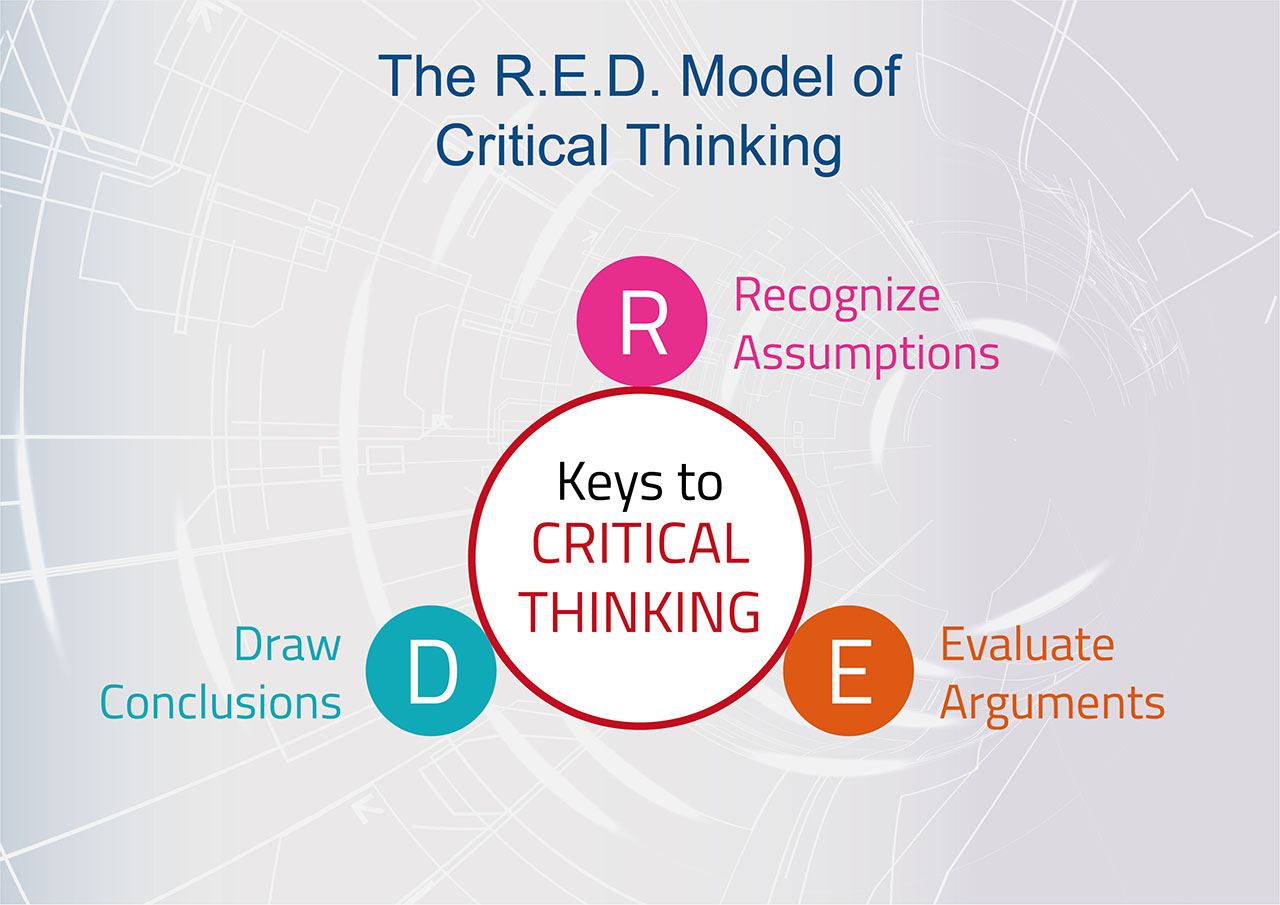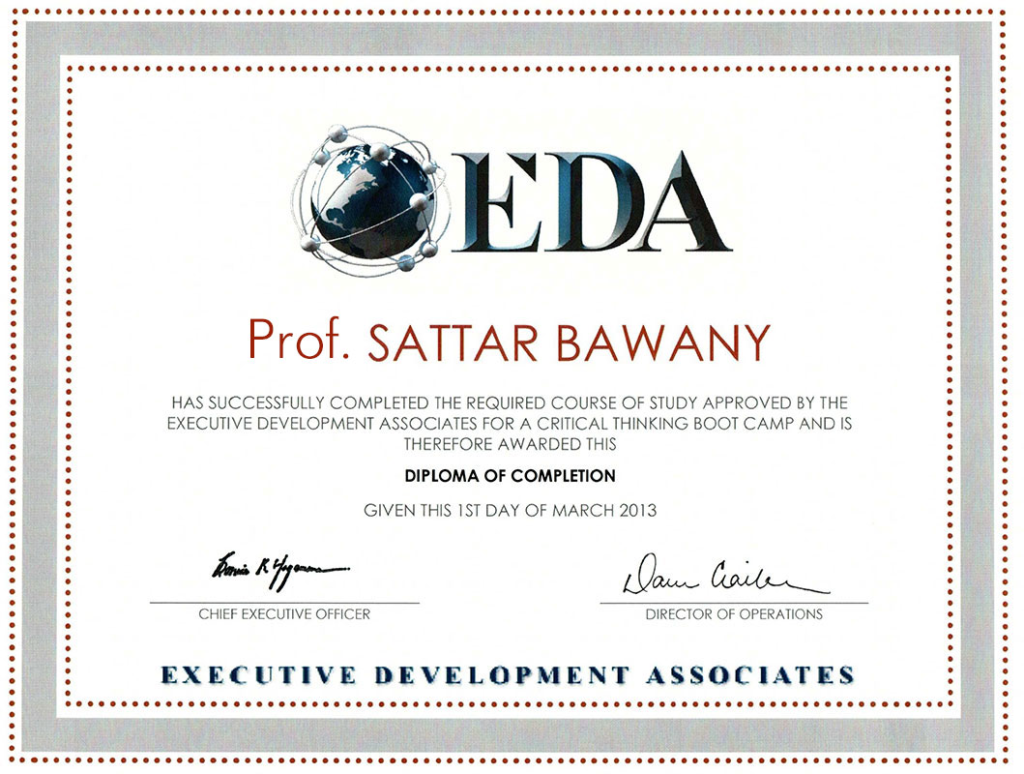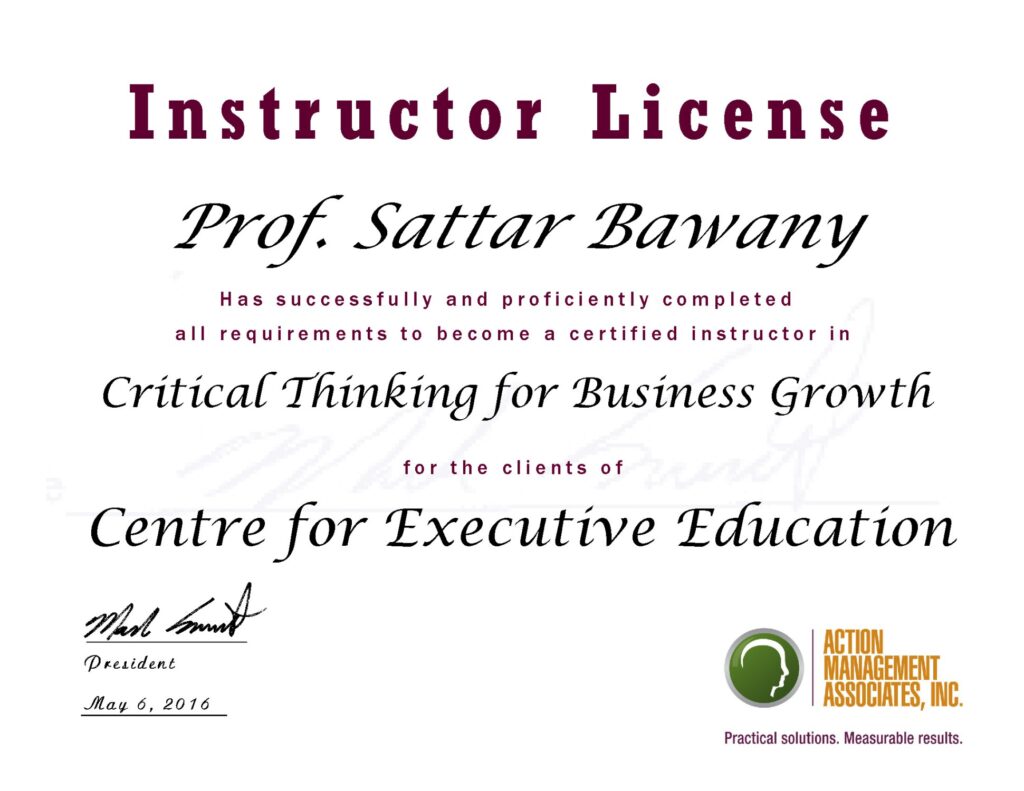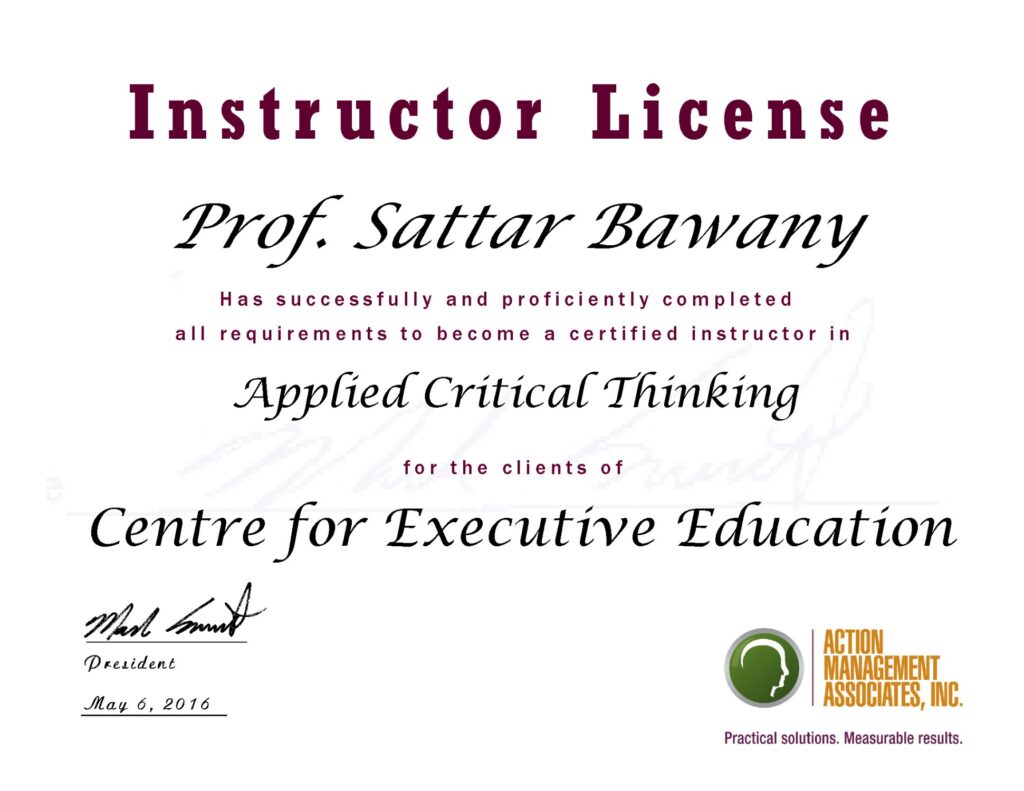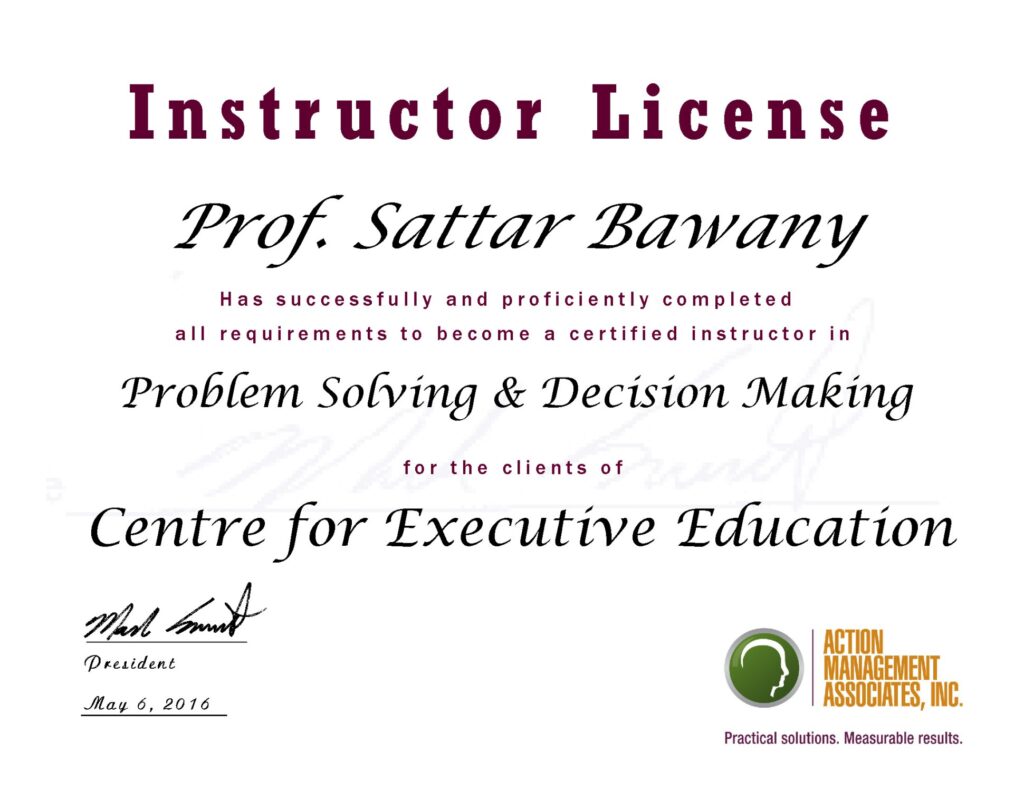We at the Centre for Executive Education (CEE) through our ongoing longitudinal research with various strategic partners globally, believes that for leaders to succeed in Fourth Industrial Revolution (IR 4.0), which is termed by World Economic Forum (WEF) founder, Dr Klaus Schwab; they would need to demonstrate effectively the cluster of cognitive readiness competencies which would enable leaders to recognize patterns in chaotic situations, adapt or change problem solutions based on the patterns identified, and then effectively take action to implement the new solutions.
Importance Of Cognitive Readiness Competencies (Advanced Critical Thinking Skills) In Today's Disruptive And Digital-Driven Workplace
Responding to these external changes, continuous internal transformations are necessary for businesses to be relevant in the increasingly volatile, uncertain, complex, and ambiguous world. Leaders will have to visualize and anticipate these changes even before they occur, and it has to be reflective of the strategies they create. The speed with which the changes are occurring would also mean that they have to bring a high degree of rigour in execution, have strong self-belief and confidence, and build a high-performance culture comfortable with change and capable of driving change across all levels.”
-Sattar Bawany (2023)
In today’s highly disruptive and digital-driven world, organizations continue to be impacted by a multitude of changes, influencing the way they operate. With increasing volatility in the markets, ever-changing customer needs, and continuous technology-led disruptions to business models, it is an organization’s agility and resilience that can help it weather the storm of changes that hit it every day.
On the other hand, the complexity and disruptions in the business environment today continuously decrease the visibility of businesses beyond a quarter, impeding organizations’ ability to build long-term plans and requiring them to reinvent continually.
The four elements of VUCA (see Figure 1) describe the “fog of war”—the chaotic conditions that are encountered on a modern battlefield. Its relevance to leaders in business is clear because these conditions are highly descriptive of the environment in which business is conducted every day (Bawany 2020).
Figure 1: The Four Elements Of V.U.C.A. Business Environment
EDA Paragon7 Cognitive Readiness Competencies
Figure 2: The Paragon7 Cognitive Readiness Competencies
CEE’s global strategic partner, the Executive Development Associates (EDA) has identified the following 7 key cognitive readiness skills collectively known as Paragon7 (see Figure 2), which develop, enhance or sustain a leader’s ability to navigate successfully in this ‘new normal’: (Bawany, 2017)
- Mental Cognition: Recognise and regulate your thoughts and emotions
- Attentional Control: Manage and focus your attention
- Sensemaking: Connect the dots and see the bigger picture
- Intuition: Check your gut, but don’t let it rule your mind
- Problem Solving: Use analytical and creative methods to resolve a challenge
- Adaptability: Be willing and able to change, with shifting conditions
- Communication: Inspire others to action; Create fluid communication pathways
Leveraging On Cognitive Readiness For A Mentally Prepared Culture @ Google
Making this shift is only the beginning. You must then shift the culture to be empowered and mentally prepared. Using a simple definition, if culture is “the way we do things around here,” then the idea of “thinking employees”—where each person from the CEO to the janitor is expected to exhibit superior decision-making skills—becomes a part of the culture. The importance of culture cannot be emphasized enough.
According to the National Association of Corporate Directors, “the oversight of culture must be a key board responsibility, as it is inextricably linked with strategy, CEO selection, and risk oversight.” (Hagemann & Schatz 2019)
Given that, what does a mentally prepared culture look like? Google is a great example of a company with a mentally prepared culture, and the results speak for themselves. In Fast Company‘s 2014 list of the Most Innovative Companies, Google earned the top spot. Since then, it was number 4 in 2015 and number 2 in 2017.
Google’s culture fosters cognitive readiness in that it insists on every employee taking time to think and act on ideas. The company gives employees a voice—encourages them to share it with others, try it on, collaborate, and potentially bring new things to the marketplace. Does it work? Some of the company’s game-changing innovations include Google Fiber, the driverless automobile, wearable computers, autocomplete, Google translate, and universal search.
“L.E.A.P.” Through The Fog Of A Disruptive & VUCA World
Figure 3: The L.E.A.P. Framework For Managing Leadership Challenges Of A Disruptive & VUCA World
Liberal: A leader needs to exhibit liberal thinking (disruptive mental agility) with a breakthrough mindset that requires openness to developing new behaviours, skills, or opinions and the willingness to adapt or discard existing values if necessary to survive in the new normal. Leading in a disruptive environment means getting used to incredible levels of uncertainty. A leader will never know how something will work until they try it. Modifying their assumptions and adapting or revising their plans in accordance with the desired results is the standard practice of the most highly effective disruptive leaders.
Exuberant: Leaders that thrive in a disruptive environment are energized and demonstrate a sense of passion and optimism while being grounded in reality and in engaging the team and other stakeholders. They are optimistic and consistently look for the good in all successes, failures, and challenges. Passion is a sense of energy for something. A leader’s passion and purpose are their internal energy source, the fire or determination they have to reach their destination.
Agility: Leaders need to be change agents by demonstrating resilience with mental and learning agility. Learning agility is the ability and willingness to learn from every situation a leader goes through in life—including the ones where they have no idea what to do—and to find solutions by leveraging on cognitive readiness and critical thinking skills. The inability to adapt proficiently has often been cited as the reason for leadership derailers.
Partnership: Building and sustaining a trust-based partnership with employees, team members, and external stakeholders, including customers and suppliers, is crucial, especially during disruptive times. When people trust a leader, they have confidence in that leader’s decisions. Even in times of uncertainty, they will be influenced and supportive of the leaders. That is because they expect their leaders to do what the leaders say they will do.
The “R.E.D.” Model of Critical Thinking
Figure 4: The “R.E.D.” Model of Critical Thinking
Reference: Bawany, S, (2023) “Leadership in Disruptive Times: Negotiating the New Balance” (Business Expert Press LLC, New York, NY)
Pearson has developed the following RED Model – Recognize assumptions, Evaluate arguments, Draw conclusions – as a way to view and apply Critical Thinking principles when faced with a decision. This model is particularly helpful in Critical Thinking training programs.
R ecognize Assumptions. This is the ability to separate fact from opinion. It is deceptively easy to listen to a comment or presentation and assume the information presented is true even though no evidence was given to back it up. Perhaps the speaker is particularly credible or trustworthy, or the information makes sense or matches our own view. We just don’t question it. Noticing and questioning assumptions helps to reveal information gaps or unfounded logic. Taking it a step further, when we examine assumptions through the eyes of different people (e.g., the viewpoint of different stakeholders), the end result is a richer perspective on a topic.
E valuate Arguments. It is difficult to suspend judgment systematically and walk through various arguments and information with the impartiality of Sherlock Holmes. The art of evaluating arguments entails analyzing information objectively and accurately, questioning the quality of supporting evidence, and understanding how emotion influences the situation. Common barriers include confirmation bias, which is the tendency to seek out and agree with the information that is consistent with your own point of view or allow emotions – yours or others’ – to get in the way of objective evaluation. People may quickly conclude simply to avoid conflict. Being able to remain objective and sort through the validity of different positions helps people draw more accurate conclusions.
D raw Conclusions. People who possess these skills can bring diverse information together to arrive at conclusions that logically follow from the available evidence, and they do not inappropriately generalize beyond the evidence.
Furthermore, they will change their position when the evidence warrants doing so. They are often characterized as having “good judgment” because they typically arrive at a quality decision.
Each of these Critical Thinking skills fits together in a process that is both fluid and sequential.
When presented with information, people typically alternate between recognizing assumptions and evaluating arguments. Critical Thinking is sequential in that recognizing faulty assumptions or weak arguments improves the likelihood of reaching an appropriate conclusion. It is helpful to focus on each of the RED skills individually when practicing skill development. With concentrated practice over time, typically several months, Critical Thinking skills can be significantly increased.
Conclusion
Research by the Centre for Executive Education (CEE), Executive Development Associates (EDA), and other strategic partners have shown that today disruptive leaders need to demonstrate a suite of leadership competencies, including cognitive readiness (critical and strategic thinking skills), emotional and social intelligence, resilience, managerial coaching and leading team for performance, in order to drive results and achieve success in a high-performance organization.
Programs On Developing Cognitive Readiness And Critical Thinking Skills For Leaders At All Levels
We may not be able to increase IQ, but leaders can learn skills to enhance their overall critical thinking capabilities. Much like an athlete, critical thinkers can improve and be developed, but it requires effort, practise, and dedication.
CEE along with our global strategic partners, Executive Development Associates (EDA) and Action Management Associates Inc. (AMAI) has collaborated with industry-leading researchers and thought partners to develop a suite of programs that strategically build critical thinking competency. Starting with the top-of-the-house and cascading throughout the organization, we have comprehensive solutions to suit a variety of workgroups and business needs.
Overview Of Critical Thinking Programs
Paragon7: Critical Thinking Transcended
The Paragon7 Program has never before been available to the corporate sector, but now business leaders can hone their decision-making skills, learn to take more rapid action, anticipate, adapt and be ready to expertly address whatever novel challenges they may face in the future. This training goes beyond traditional critical thinking training—it exponentially multiplies elite leaders’ mental potential so they can successfully confront ill-defined, high-intensity challenges in the complex, dynamic, and often-ambiguous modern business world.
Acuity follows readiness. Once leaders are ready for any challenge or situation, then they are open to new insights that will propel them forward by leveraging innovation, intuition, and creativity to shape reality.
Impact occurs when leaders cascade learning throughout their organizations. Paragon7 teaches leaders how to foster their teams’ cognitive capital, as well as implement processes for long-term sustainment.
Critical Thinking Boot Camp (CTBC)
The Critical Thinking Boot Camp (CTBC) is an intensive, 3-phase development process focused on learning practical skills that will have an IMMEDIATE impact on your bottom line. While there won’t be any push-ups or sprints, each attendee will be immersed in masters level, vigorous training on critical thinking. They will be assessed, will work on their real work-related issues and be kept accountable by a coach as well as your management team. Seventy-four per cent of participants say they applied new skills on the job!
Think RED Workshop
The Think RED Program introduces participants to critical thinking skills development through the presentation and application of the Pearson TalentLens RED Model: recognize assumptions, evaluate arguments, and draw conclusions based on an objective, clear-eyed appraisal of the available evidence. Multiple real-world examples and activities will be interwoven with content, enabling participants to immediately apply RED Model thinking skills to actual business challenges in problem-solving and decision making. This one day program is designed to serve as a stand-alone critical thinking tool, or as the foundation for further skills development through follow-up participation in our advanced critical thinking workshops.
Critical Thinking for Business Growth (CTBG)
The Critical Thinking for Business Growth (CTBG) is an interactive, results-focused program that teaches how to think logically and comprehensively about a situation and identify an appropriate course of action while preventing additional problems. Over fifty per cent of this workshop involves participants in experiential activities and on-the-job applications. The course utilizes a dynamic blend of instructor presentation and individual skill practice in each of the concepts presented, using personal work concerns brought by participants.
Applied Critical Thinking
Time is a valuable asset in today’s business world. The Applied Critical Thinking (ACT) workshop delivers powerful short-cut thinking tools in less time. The conceptual framework of this one-day workshop is built around critical thinking skills which provide more effective solutions to important business concerns.
The ACT processes give participants increased confidence to create and/or seize opportunities for improvement. Whether they are solving problems, creating new opportunities, making decisions with limited time and information or implementing plans, this action orientation will result in more profitable business results as participants confidently demonstrate a bias for action.
Problem Solving & Decision Making (PDSM)
Problem Solving & Decision Making (PSDM) is an interactive, outcome-focused workshop that blends team development with rational and creative critical thinking processes to create a comprehensive approach to problem-solving, decision making, and planning. Over sixty per cent of this program involves participants in learner-driven activities and on-the-job applications. The course offers a dynamic blend of instructor presentation, on-the-job application, and skill practice in each of the PSDM processes using work-related concerns brought by participants. Principles of teamwork and effective meeting management are practised by participants throughout the workshop.
For more information about these programs, please contact us today.


